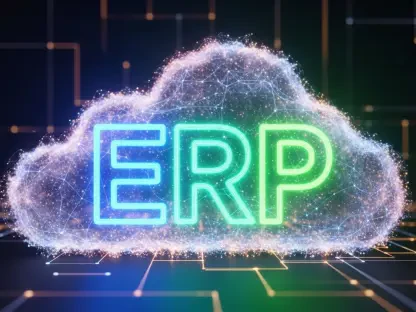Overview of the Public Sector Technology Landscape
The public sector, encompassing Higher Education, State & Local Government, and Special District agencies, is at a critical juncture in technology adoption. Many of these entities are grappling with outdated systems that hinder efficiency and transparency, yet the push for digital transformation is stronger than ever. A significant portion of these organizations, particularly smaller ones with fewer than 500 full-time employees, struggle to keep pace due to constrained budgets and limited technical expertise, creating a pressing need for accessible solutions.
Enterprise resource planning systems like Workday have emerged as pivotal tools in modernizing operations across these sectors. They offer integrated platforms for managing finances, human resources, and other core functions, streamlining processes that once relied on fragmented, manual approaches. Adoption of such systems is no longer a luxury but a necessity for maintaining compliance, improving service delivery, and meeting stakeholder expectations in an increasingly digital world.
Key market players, including ERPA, which has been a notable contributor since its inception over two decades ago, are shaping this landscape with innovative deployment strategies. Technological advancements, particularly in artificial intelligence, are redefining how solutions are implemented, offering automation and predictive insights. However, smaller entities often face unique hurdles—such as insufficient funding and staff shortages—that prevent them from leveraging these robust systems, highlighting a gap that demands targeted interventions.
Introducing OPTIMA by ERPA Tailored Solution
Key Features and Innovations
OPTIMA by ERPA represents a groundbreaking approach to Workday deployments, specifically designed for smaller public sector organizations. This methodology incorporates a prescriptive, AI-enhanced framework that simplifies the implementation process. By leveraging AI-native tools, OPTIMA automates repetitive tasks, enhances data accuracy, and minimizes errors, ensuring a smoother transition to modern systems.
A distinguishing feature of this solution is the use of consistent, dedicated teams with named resources assigned to each project. This structure fosters familiarity and trust, facilitating user adoption and effective knowledge transfer. Such continuity is critical for organizations with limited internal capacity, as it reduces dependency on external support over time.
Additionally, the methodology prioritizes risk reduction through guided processes that anticipate potential pitfalls. The integration of advanced analytics allows for real-time monitoring and adjustments during deployment, ensuring that issues are addressed proactively. This innovative blend of technology and personalized support sets a new standard for enterprise system rollouts in resource-constrained environments.
Benefits for Smaller Public Sector Entities
Smaller public sector entities stand to gain significantly from OPTIMA’s tailored design, particularly through its fixed, reduced cost structure. Unlike traditional deployments that often escalate in expense, this solution offers predictability in budgeting, a critical factor for organizations with tight financial constraints. Shorter deployment timelines further amplify its appeal, enabling faster realization of system benefits.
The methodology also incorporates industry-specific accelerators crafted to meet the unique needs of Higher Education, State & Local Government, and Special District agencies. These pre-configured tools address common pain points, such as compliance reporting and workforce management, reducing customization efforts. A limited-risk approach, supported by structured guidance, ensures that even organizations with minimal technical expertise can navigate the process successfully.
Beyond initial implementation, OPTIMA introduces a Deployment as a Service (DaaS) model, paired with comprehensive post-go-live support. This ongoing assistance helps sustain system performance and user confidence, addressing challenges that may arise after launch. Such long-term commitment is essential for ensuring that smaller entities achieve lasting value from their technology investments.
Challenges in Technology Adoption for Smaller Organizations
Smaller public sector organizations often face formidable barriers when adopting advanced technology systems. Limited budgets restrict their ability to invest in comprehensive solutions, while staff shortages exacerbate the challenge of managing complex implementations. These constraints frequently result in delayed or incomplete modernization efforts, leaving critical operations vulnerable to inefficiencies.
Traditional deployment methods compound these issues by introducing significant risks, such as scope creep and unexpected costs. Without adequate resources to oversee intricate integrations, smaller entities may encounter system incompatibilities or data migration failures. Such setbacks can erode trust in technology initiatives and stall progress toward operational improvements.
OPTIMA by ERPA directly tackles these obstacles through streamlined processes that minimize complexity and resource demands. By offering a structured, AI-driven framework, it reduces the burden on internal teams, while continuous support mechanisms address post-implementation hurdles. This approach not only mitigates immediate risks but also builds a foundation for sustained technological advancement in under-resourced settings.
Regulatory and Compliance Considerations in Public Sector Deployments
Navigating the regulatory landscape is a cornerstone of technology adoption in the public sector, where data security and privacy standards are non-negotiable. Agencies and institutions must adhere to stringent mandates, such as those protecting sensitive student or citizen information, often under intense scrutiny from oversight bodies. Failure to comply can result in legal repercussions and loss of public trust.
Workday, as a leading platform, embeds robust compliance features that align with these requirements, a capability further enhanced by OPTIMA’s deployment methodology. This solution ensures that configurations meet specific regulatory needs, whether in Higher Education or government settings, safeguarding data integrity throughout the system lifecycle. Such alignment is vital for maintaining operational legitimacy and protecting stakeholder interests.
ERPA plays an instrumental role in simplifying regulatory complexities, leveraging its extensive experience to guide organizations through intricate compliance landscapes. By proactively addressing potential issues during deployment, the methodology minimizes disruptions and ensures secure, lawful system use. This expertise provides smaller entities with confidence that their technology initiatives align with mandatory standards.
Future Trends in Public Sector Technology Modernization
Artificial intelligence and prescriptive methodologies are poised to redefine enterprise technology deployments in the public sector over the coming years. These innovations promise to enhance efficiency by automating decision-making and predicting implementation challenges before they arise. As adoption of such tools grows, they are expected to become integral to achieving scalable, cost-effective modernization.
Market dynamics are also shifting, with increasing demand for affordable solutions among smaller entities driving competition and innovation. This trend may act as a disruptor, pushing providers to develop more accessible offerings tailored to limited budgets. Over the next few years, from now until 2027, the focus on affordability is likely to intensify, reshaping how technology vendors approach this segment.
Solutions like OPTIMA by ERPA are at the forefront of this evolution, offering a glimpse into how tailored methodologies can influence broader adoption trends. Amid global economic pressures and resource constraints, such innovations could pave the way for widespread digital transformation. The emphasis on efficiency, risk reduction, and long-term support may well set a benchmark for future public sector technology strategies.
Final Reflections and Path Forward
Looking back, the introduction of OPTIMA by ERPA marked a pivotal moment for smaller public sector organizations striving to modernize with Workday. Its AI-enhanced, prescriptive approach addressed longstanding barriers, delivering cost savings, reduced timelines, and minimized risks. The dedicated support and industry-specific tools provided a lifeline for entities that previously struggled to adopt enterprise systems.
As a next step, stakeholders in Higher Education, State & Local Government, and Special District agencies should consider partnering with providers who prioritize tailored, sustainable solutions. Exploring methodologies that offer ongoing assistance can ensure that initial successes translate into enduring operational gains. Engaging with experienced vendors can also help navigate evolving compliance demands and technological advancements.
Moving ahead, the focus should remain on scalability and adaptability, ensuring that technology investments remain relevant amid shifting economic and regulatory landscapes. Smaller organizations must advocate for solutions that balance innovation with affordability, fostering resilience in an era of constant change. This strategic alignment can empower even the most resource-constrained entities to thrive in a digital-first environment.









